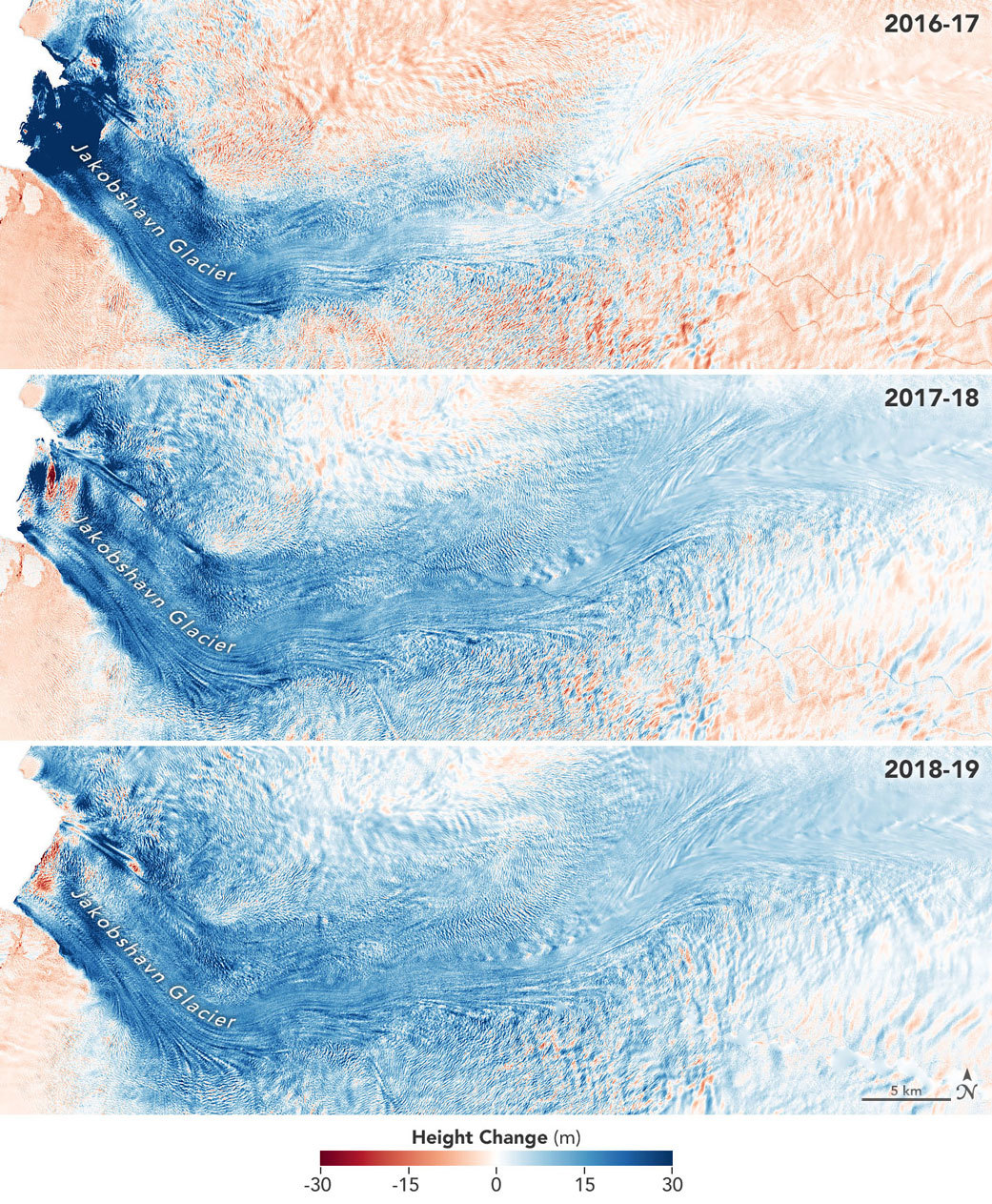News | June 18, 2019
Jakobshavn Glacier grows for third straight year

New NASA data shows that Jakobshavn Glacier — Greenland's fastest-moving and fastest-thinning glacier for most of the 2000s — grew from 2018 into 2019, marking three consecutive years of growth.
These images, produced using GLISTIN-A radar data as part of NASA's Oceans Melting Greenland (OMG) mission, show how much mass the glacier gained from 2016-17, 2017-18 and 2018-19. Areas with the most growth — about 33 yards (30 meters) — are shown in dark blue. Red areas represent thinning. The glacier grew 22 to 33 yards (20 to 30 meters) each year between 2016 and 2019. OMG, led by Principal Investigator Josh Willis, is one of several NASA missions dedicated to furthering our understanding of global sea level rise.
Jakobshavn's growth did not come as a surprise to scientists. A recent study team from NASA's Jet Propulsion Laboratory in Pasadena, California, determined that water transported to the area around the glacier by a key ocean current has been colder than it was prior to 2016, when the growth began. The colder water is not melting the ice from the front and underneath the glacier as quickly as the warmer water did.
The temperature change of the current's water is part of a known climate pattern, one that is expected to flip again, and cause more of the melting and ice thinning for which Jakobshavn is known. Although the melting rate has slowed, the glacier continues to contribute to sea level rise, ultimately losing more ice to the ocean than it gains from snow accumulation overall.
More information on OMG can be found here:
https://omg.jpl.nasa.gov/portal/
News Media Contact
Esprit Smith
Jet Propulsion Laboratory, Pasadena, Calif.
818-354-4269
esprit.smith@jpl.nasa.gov


